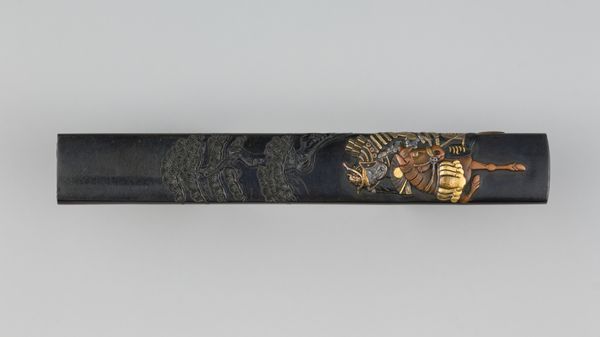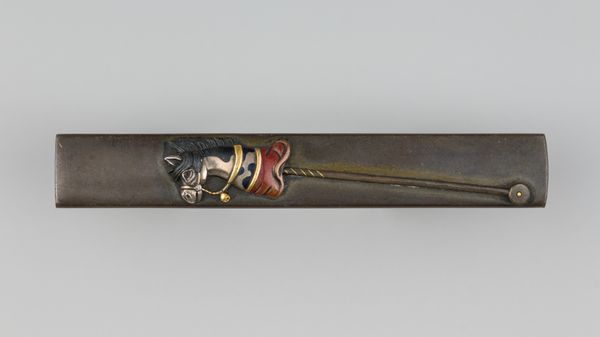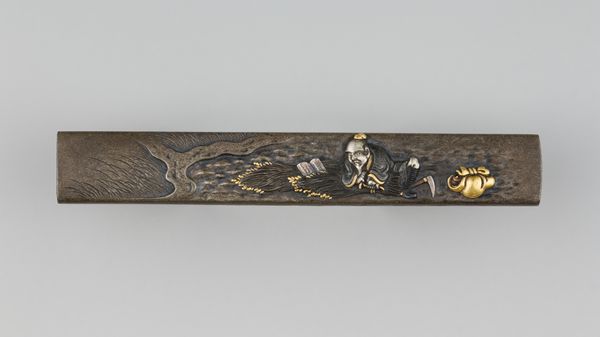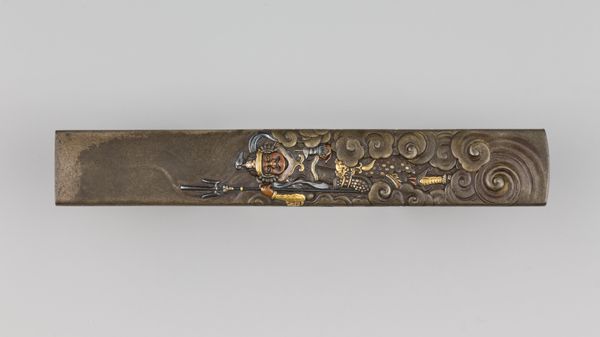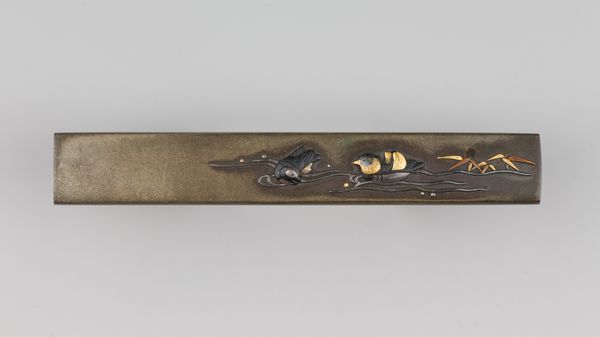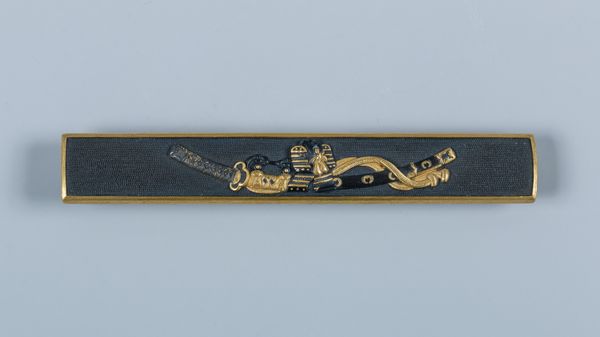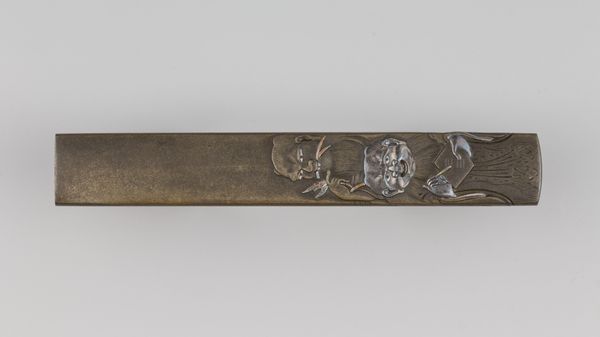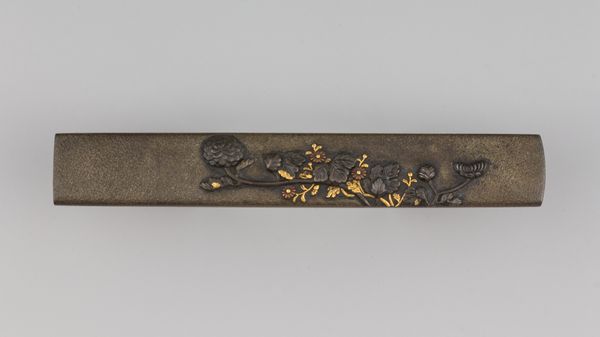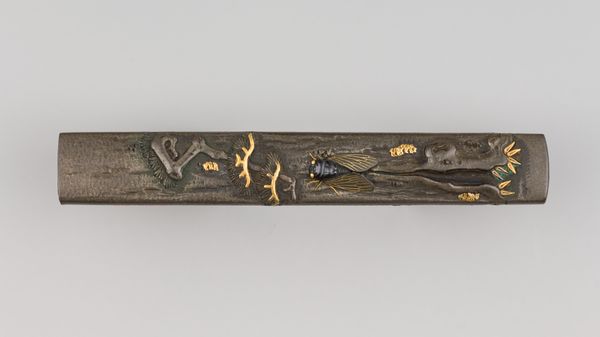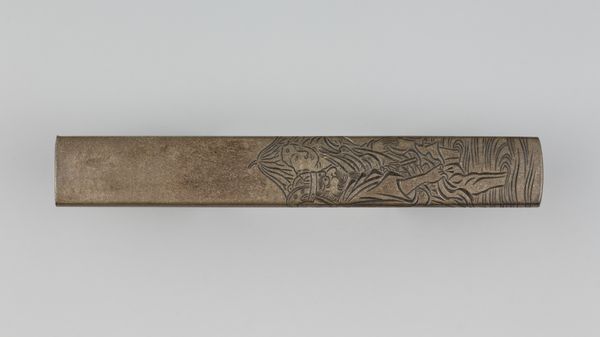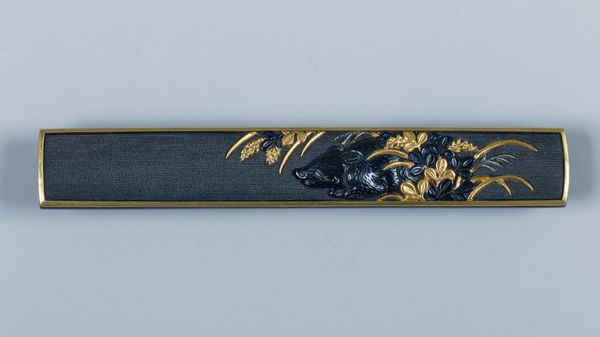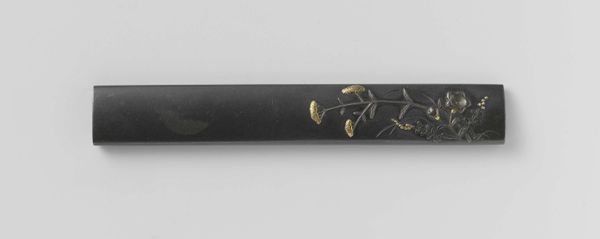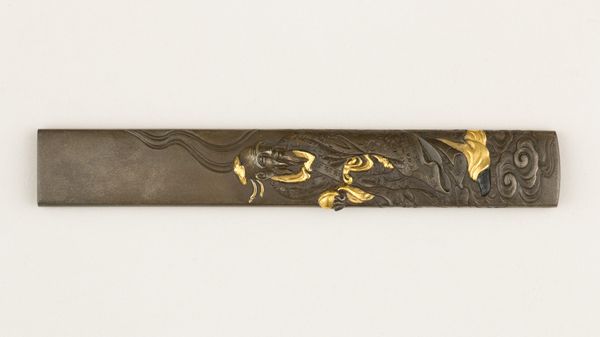
carving, metal, intaglio, wood
#
carving
#
metal
#
intaglio
#
asian-art
#
japan
#
wood
#
armor
#
decorative-art
Dimensions: L. 3 13/16 in. (9.7 cm); W. 9/16 in. (1.4 cm); thickness 1/4 in. (0.6 cm); Wt. 1.3 oz. (36.9 g)
Copyright: Public Domain
Iwama Masayoshi made this knife handle, or kozuka, from copper and gold in Japan sometime before 1837. The image, cast in relief, depicts the attributes of the Chinese Immortal, Chokaro. He is known for his magical mule, which he could summon from a gourd, and fold up and store within the same gourd at the end of their travels. Japan's art institutions of the Edo and Meiji periods codified a canon of acceptable imagery. This was based on a combination of native traditions, Chinese learning, and European techniques. We can situate Masayoshi's kozuka within this context, as Chinese folklore was popular with the elite. This handle would have been part of a pocketknife, which was commonly carried by upper-class men. As historians, we can look at who made these objects, who used them, and what kind of stories they tell in order to gain insight into Japanese society at the time. These narratives are contingent on social and institutional contexts.
Comments
No comments
Be the first to comment and join the conversation on the ultimate creative platform.
